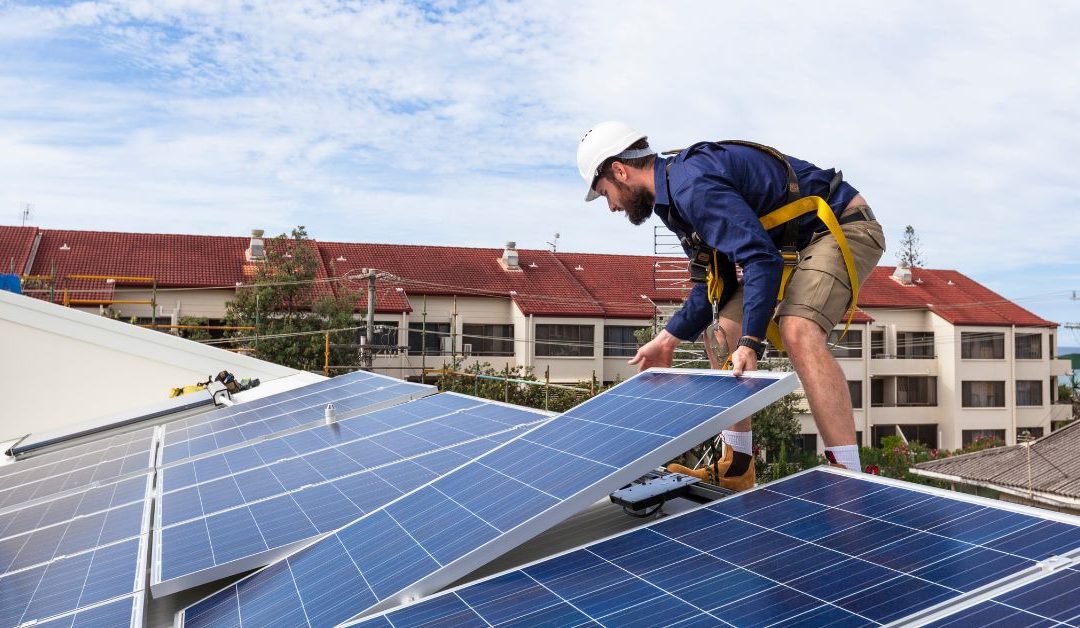On August 16, 2022, President Biden signed into law the Inflation Reduction Act (IRA), which expanded and extended two nonrefundable tax credits meant to encourage individuals to invest in energy efficiency improvements or clean energy in their homes. The IRA also proposes to lower energy costs, increase cleaner production, and reduce carbon emissions by approximately 40% by 2030. Today, we’re breaking down these two tax credits, how they are changing, and how they will affect you as a homeowner in 2023 and beyond.
Energy Efficient Home Improvement Credit
Homeowners may be familiar with this first credit, the Nonbusiness Energy Property Credit, which expired at the end of 2021. The credit was extended for tax year 2022, using 2021 parameters, however, the IRA extended and significantly improved the credit for 2023 through 2032 and has given the credit a new name – the Energy Efficient Home Improvement Credit.
The old credit, applicable prior to tax year 2023, was worth 10% of the costs of installing certain energy-saving improvements in your home, such as windows, doors, roofing, and insulation. The credit had lifetime limits on the amount of credit taken, such as an overall $500 lifetime limit and a $200 lifetime limit for new windows. This meant credits taken in previous years counted toward the limit. There were also some individual credit limits for any advanced air circulating fans ($50), any qualified natural gas, propane, or oil furnaces and hot water boilers ($150), and any single energy property item ($300), such as certain water heaters and heat pumps.
In 2023, the credit is now equal to 30% of the costs for all eligible home improvements made during the year. Improvements in roofs will no longer apply, however, the credit has been extended to cover the cost of certain improvements in biomass stoves and boilers, electric panels and related equipment, and home energy audits. The old lifetime limits have been replaced by a $1,200 annual limit on the credit amount for most taxpayers.
However, there are annual limits for specific types of qualifying improvements. These include:
- $600 for windows
- $600 for any single energy property item
- $150 for home energy audits
- $250 per exterior door, $500 total for all exterior doors
- $2,000 for qualifying expenditures on biomass stoves or water heaters and/or heat pumps powered by electricity or natural gas (the $1,200 annual limit may be exceeded in this category).
Residential Clean Energy Credit
The second credit, previously known as the Residential Energy Efficient Property Credit, was renamed, extended, and improved under the IRA as the Residential Clean Energy Credit. The credit was set to expire in 2024 but is now extended through 2034.
For the last three calendar tax years, the credit was worth 26% of the cost to install qualifying systems that use wind, solar, geothermal, biomass, or fuel cell power to produce electricity, heat water, or regulate temperature in your home. The credit was set to decrease to 22% in 2023 and further decrease to 0% in 2024. Under the IRA, the credit was increased to 30% from 2023 to 2032, then will decrease to 26% for 2033 and 22% for 2034.
The scope of the credit has also been changed. Biomass furnaces and water heaters no longer qualify under the credit, but the credit will apply to battery storage technology with a capacity of at least three kilowatt hours.
If you’re planning to make energy-efficient improvements to your home this year and wish to take advantage of these updated credits, be sure to research whether your improvement qualifies and is allowed under the credit. If you have any questions, reach out to our team!


Recent Comments